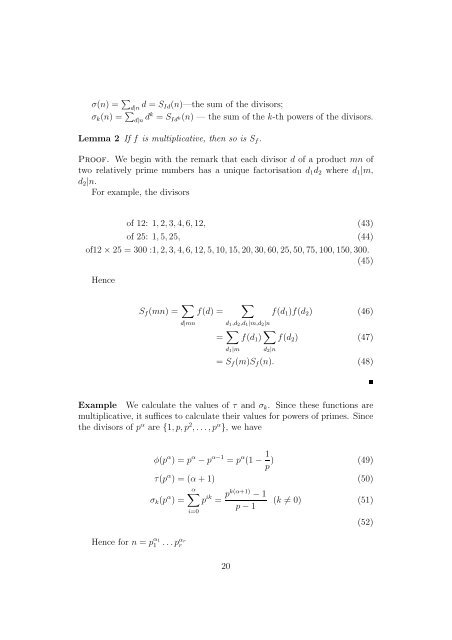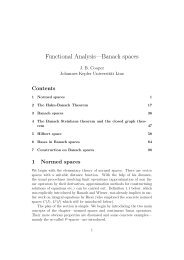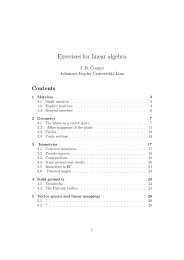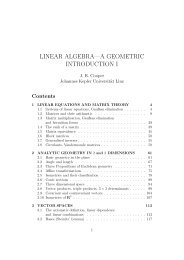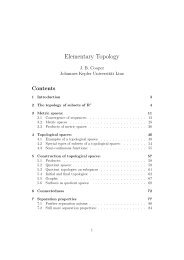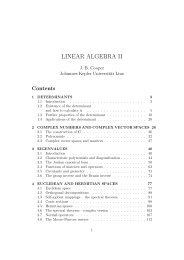Number theory, geometry and algebra - Dynamics-approx.jku.at
Number theory, geometry and algebra - Dynamics-approx.jku.at
Number theory, geometry and algebra - Dynamics-approx.jku.at
You also want an ePaper? Increase the reach of your titles
YUMPU automatically turns print PDFs into web optimized ePapers that Google loves.
σ(n) = ∑ d|n d = S Id(n)—the sum of the divisors;<br />
σ k (n) = ∑ d|n dk = S Id k(n) — the sum of the k-th powers of the divisors.<br />
Lemma 2 If f is multiplic<strong>at</strong>ive, then so is S f .<br />
Proof. We begin with the remark th<strong>at</strong> each divisor d of a product mn of<br />
two rel<strong>at</strong>ively prime numbers has a unique factoris<strong>at</strong>ion d 1 d 2 where d 1 |m,<br />
d 2 |n.<br />
For example, the divisors<br />
of 12: 1,2,3,4,6,12, (43)<br />
of 25: 1,5,25, (44)<br />
of12×25 = 300 :1,2,3,4,6,12,5,10,15,20,30,60,25,50,75,100,150,300.<br />
(45)<br />
Hence<br />
S f (mn) = ∑ d|mnf(d) =<br />
∑<br />
d 1 ,d 2 ,d 1 |m,d 2 |n<br />
= ∑ d 1 |m<br />
f(d 1 )f(d 2 ) (46)<br />
f(d 1 ) ∑ d 2 |nf(d 2 ) (47)<br />
= S f (m)S f (n). (48)<br />
Example We calcul<strong>at</strong>e the values of τ <strong>and</strong> σ k . Since these functions are<br />
multiplic<strong>at</strong>ive, it suffices to calcul<strong>at</strong>e their values for powers of primes. Since<br />
the divisors of p α are {1,p,p 2 ,...,p α }, we have<br />
Hence for n = p α 1<br />
1 ...p αr<br />
r<br />
φ(p α ) = p α −p α−1 = p α (1− 1 p ) (49)<br />
τ(p α ) = (α+1) (50)<br />
α∑<br />
σ k (p α ) = p ik = pk(α+1) −1<br />
(k ≠ 0)<br />
p−1<br />
(51)<br />
i=0<br />
20<br />
(52)


